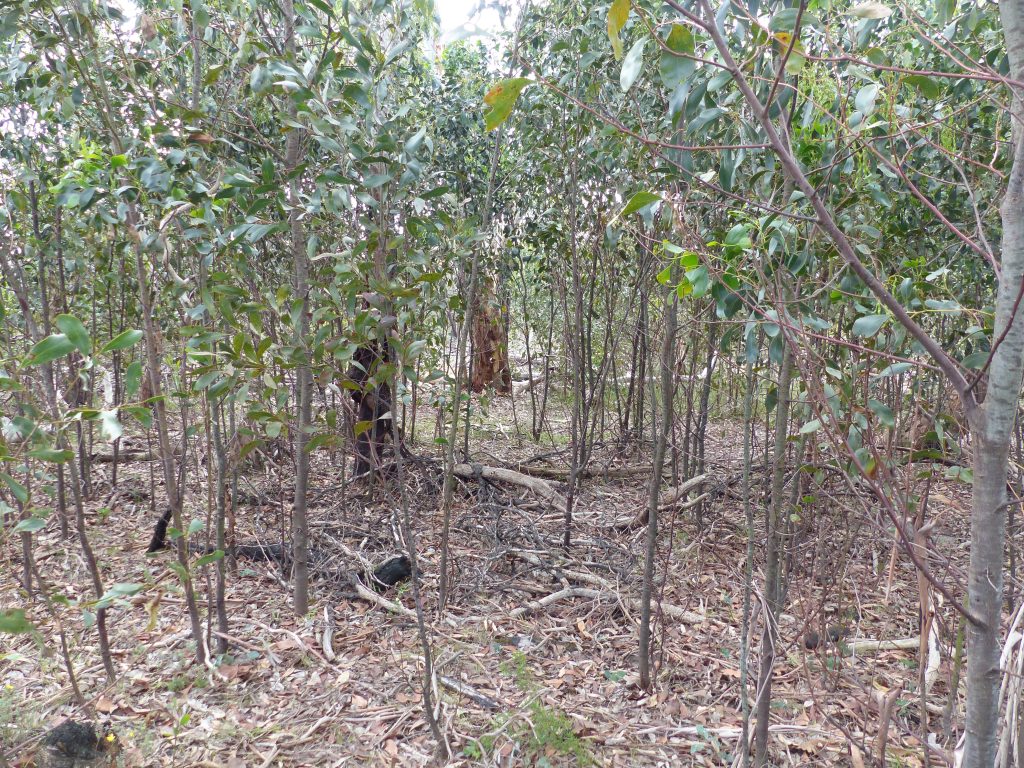Repairing the Past at private land conservation sites – Part II
Last month we introduced a new project to you, which aims to collaboratively repair impacts of past land management across four reserves in the upper South East of South Australia. Project partners have been busy lately, connecting with people and information and walking on country to plan the next steps (for more detail on the background of the project, catch up on part one here).

On recent visit to Binnum Bushland, Uncle Ken and I had the chance to discuss the impacts of previous wildfires and how we might approach managing the resulting changes in habitat structure that are particularly created by hot fires. It’s common for wattles and gums to germinate at high densities after high rainfall events or after fires. Although this mass germination is natural, it can alter the vegetation structure of the bush dramatically. So, how can we increase complexity in the habitat structure and reduce the dominance, in the example pictured above, of Golden Wattle (Acacia pycnantha) which has germinated at high densities after fire? Fire, of a lower intensity, may be part of the answer.
In the video below, listen to Uncle Ken as we walk through Binnum Bushland to find locations where fire could be used to increase the abundance and diversity of bush foods and minimise the establishment and/or dominance of shrubby understorey species (such as Golden Wattle).
A number of Repairing the Past project actions will occur over the coming months, including:
- to finalise and submit prescribed/planned burn plans to the relevant authorities; and
- to continue to grow seedlings for dam site decommissioning and rehabilitation this winter.
We’ll keep you updated as things progress!
This project is funded through the South Australian Government, devolved by the Revitalising Private Conservation in South Australia pilot project – working in partnership with Nature Foundation, Livestock SA, Trees For Life, Nature Conservation Society SA and Conservation Council SA.
